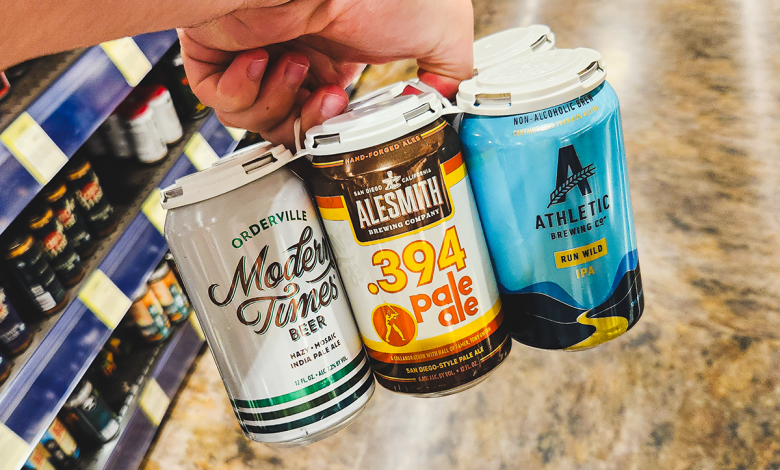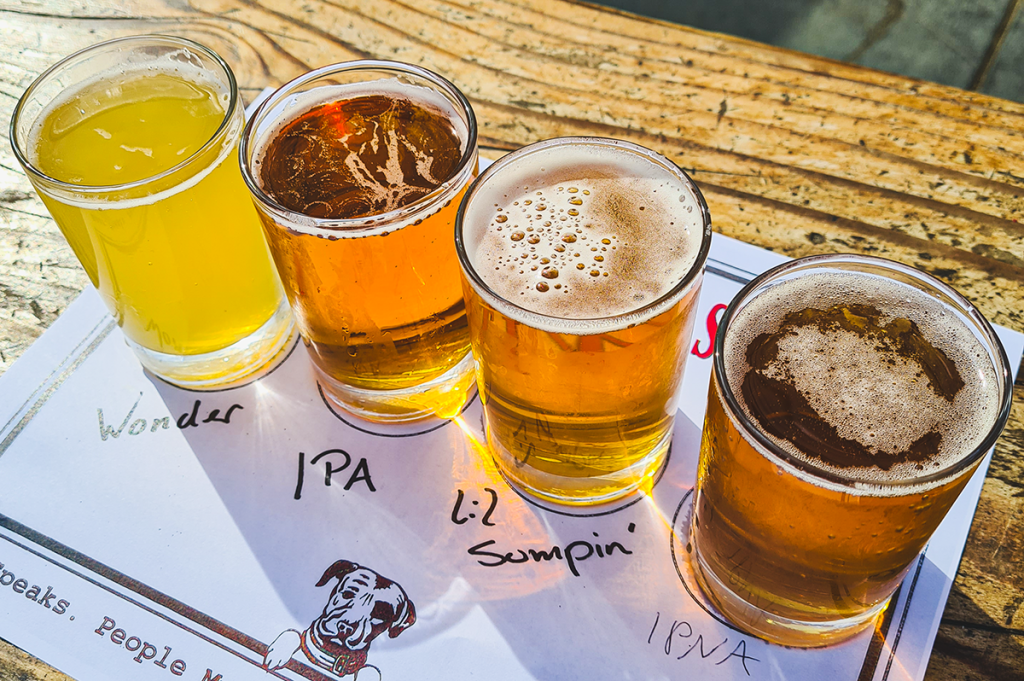An outsider’s take on San Diego’s beer scene
Two years after moving from Europe to live in the Capital of Craft, a beer-industry vet explains the differences, surprises he’s encountered

Words and Photos by Ilia Gordeev
People of the future, allow me to introduce myself. My name is Ilia, but you’d do well to think of me as Marty McFly stepping out of the DeLorean and landing in San Diego straight from a beer timeline still stuck in 2015. I’m talking about Europe. There, craft-beer energy is alive and buzzing, and the industry, bars and drinkers are coming along, but they are still playing catch-up with the U.S.
I spent more than eight years working in the beer industry back home. I started as a bartender at one of the first craft bars in my hometown, then worked for brewing and distribution companies across Eastern Europe. That gig took me to classic breweries and festivals in Germany and Belgium. It was extraordinary, but my aspiration was always the same – one day I would live in the U.S. and see the craft capital up close.
I always wanted to live here – not just in this country, but specifically San Diego – where I would be able to soak up the joy of craft beer in the place where so many icons were born. Since arriving in 2023, a few things have surprised me. Some are awesome, some are confusing, but all of it is very American in the best possible way.

First, let me say this clearly: You live in IPA heaven! West Coast, hazy, fruited, imperial, session – you have the entire lineup. In particular, examples of your city’s namesake style, the San Diego-style IPA, are fresh, bright and crisp. When I lived in Eastern Europe, ordering IPAs was a gamble. Maybe one in every five landed right. Breweries having fresh hops at their disposal matters, and you can taste the difference. So the next time you feel boredom setting in over yet another new IPA release, think of the beer geeks overseas still chasing a fresh can that tastes like your local. You are spoiled…and I mean that as a compliment.
Another thing that blows my mind here is the sheer scale of the American craft-brewing industry. There are almost 10,0000 breweries in the U.S., with more than 150 brewery venues here in San Diego County. You can practically toss a frisbee and hit a taproom, and I’ve enjoyed flinging myself from brewery to brewery to see what each has to offer. Like many, I started off with the famous names: Stone, Ballast Point, AleSmith. (I arrived too late for Green Flash…RIP.) What surprised me once the brewery-tour honeymoon came to a close was how samey so many tap lists felt. A standard beer menu included five IPAs, a flight of lagers and maybe one or two curveballs.

Despite the fact I lived near Leipzig, Germany, less than two hours from the place of origin for the saline breed of sour wheat ale known as gose, the first example of the style I experienced came from Northern California’s Anderson Valley Brewing. That and other American takes on worldly styles had me expecting to find every type of beer imaginable at U.S. craft breweries. Thus, it was shocking to see so many of them playing it safe, especially since I’d come in expecting chaos and curiosity.
And then there are the side quests: hard tea, hard seltzer, hard kombucha. I get it. The market has shifted and breweries need to keep the lights on. And people drink across categories now versus sticking solely to beer. But sometimes it feels like someone poured vodka into every other beverage just to see what would happen. For the record, vodka and tea should be separate; a quick shot, then a nice hot cup of tea – not both at the same time. I am half-joking…but also half-serious.
If I can point to one big American win, it’s singles. Whoever pushed the retail world to sell one can or bottle of beer at a time deserves a medal. Years ago, as a tourist, I wanted to try so many new beers at home and it was a pain. You want to try that Belgian-style tripel? Great! Enjoy paying for six and hoping they taste good, followed by the fun of getting way too tipsy on a Tuesday. Now, I can walk into a Trader Joe’s, Ralphs or Total Wine & More and purchase a mix of cans or grab a variety pack (like the one pictured above). That is consumer-friendly and perfect for exploring the world of beer. I love not needing to commit to a sixer of something I love or, worse yet, might like.

Browsing U.S. grocery store aisles brought up another surprise. Style expectations feel different here. I pick up a blonde ale that sits at 5% (alcohol-by-volume). Back home, I would expect closer to 6% for that label. Then I grab a sour ale and discover it tastes like candy. I am not anti-fruit, but when the sweetness takes over, the style loses the complex, wine-like layers that make sours special. That might be part of why mixed-fermentation beers never went truly mainstream here. It’s just a theory from someone who has tasted through many a sour-ale cellar, enough to almost end up with a stomach ulcer. (Pro Tip: Do not drink real sours without food!)
On the retail side, Europe is a mixed bag. Supermarkets can feel bare, but specialty shops carry just about everything. From that distance, American brands look gigantic. Up close, many are smaller than one would expect, which makes their reach even more impressive. Logistics here still puzzle me. In Berlin, I could buy Toppling Goliath Brewing’s single-hop pale ale, Pseudo Sue, no problem. Yet, in San Diego, I hear people say that beer comes from Iowa, so there is no chance it will ever show up locally. Iowa is in the same country as San Diego, so what is the holdup? Maybe it is history, distribution deals or simple demand. I am still learning.
My friends back home have a thousand questions about the States. From far away, myths grow. Sometimes that helps the industry, but sometimes it confuses it. Take hop burn, for instance. Where I am from, people consider hop burn an indicator of beer quality; more burn means more hops. In reality, it usually means process problems or a beer that needed time to mellow out. Having migrated here, I’m able to say “live and learn”. Having benefited from the elevated consumer knowledge and wide perspective that can only come this far along in a country’s craft-beer evolution has been eye-opening and accelerated my own personal journey.
In closing, allow me to provide San Diego breweries a friendly nudge from your new neighbor. Keep the IPAs coming, keep the single cans on the shelf and maybe toss one more out-there style on your tap list. Perhaps a proper gose with a lean salt snap or a mixed-ferm saison with some grip. The world is still watching what you brew, and some of us moved all the way out here to drink it.

